Rome, London, Tokyo, Los Angeles: to the savviest and most experienced travelers, it may seem there’s little to see in any that hasn’t been covered in local, national, or international guides. But those in the know realize that the most popular cities can offer the best discoveries—stretches that don’t draw the crowds, but are equally worthy of a visit for their architectural splendor, other worldly charm, or hyper-local shops and boutiques.
We’ve rounded up our favorite secret streets in some of the most sought-after destinations worldwide. Read on for the list, or jump ahead to your city of interest: Barcelona; Beijing;Boston; Chicago; London; Los Angeles; Maui; Rome; San Francisco; and Tokyo.
Barcelona

Few cities in the world boast more delightful narrow, winding alleyways or secret, hidden squares than Barcelona. Here are the ones you shouldn’t miss on your next trip to the Catalan capital.
1. Carrer de Joaquín Costa
If you’d like to explore Barcelona’s authentic, gritty nightlife scene, look no further than the dive bars that line this narrow street on the border of the Raval and Sant Antoni neighborhoods. By day it may not look like much, but at night it comes alive, with music and young people spilling out of every doorway. Local favorites include Betty Ford,Negroni, and Bar 33/45. Be warned: the street is also a popular haunt for pickpockets, so keep an eye on your valuables.
2. Carrer dels Flassaders
Of all of Barcelona’s neighborhoods, none is more picturesque than El Born, with its winding lanes and many hidden treasures. One of its narrowest, most alluring streets is Calle Flassaders, with its array of designer boutiques and tiny eateries. For fans of the writing of Carlos Ruiz Zafón, Calle Flassaders also provides the sinister backdrop for his book, The Angel’s Game.
3. Eixample Street Corners
The upmarket Eixample district was designed in the mid-19th century by urban architect Ildefons Cerdà in an exact grid pattern that’s criss-crossed with broad avenues and octagonal city blocks. Architecture enthusiasts should venture off the main strip on Passeig de Gracia to see some of the city’s breathtaking modernist facades, including the chic apartment blocks on the corners of Calle Muntaner and Calle Consell de Cent, and Calle Bailén and Calle Valencia.
4. Carrer d’Evarist Arnús
Most people know of only one good reason to visit this part of town—to watch FC Barcelona at Camp Nou. The lesser-known excuse is a delightful street called Carrer d’Evarist Arnús, which is not only home to a charming row of tiny townhouses but also to Bangkok Café, Barcelona’s best and only truly authentic Thai restaurant.
5. Calle de Torrijos
Typical of the laid-back district of Gracia, Calle Torrijos is perfect for a leisurely stroll from sunny, green Placa Virreina, all the way down to the Abaceria Central market. Aside from all the delightful neighborhood stores, including a pastry shop, a Mexican deli, and several tiny boutiques and cafés, this road is also home to every ex-pat’s favorite: “Cine Verdi,” an English-language movie theater.
6. Passatge de la Concepció
Considering that this passageway links two of Barcelona’s main thoroughfares (Passeig de Gracia and Rambla de Catalunya), it’s surprising how few people know about it. It’s a tranquil oasis away from the hustle and bustle of the city that’s home to several excellent restaurants, including Boca Grande, Petit Comitè, Tragaluz and Mordisco.
7. Plaça de Sant Felip Neri
Hidden deep in the Gothic quarter, Plaça de Sant Felip Neri was built on the site of a medieval cemetery, and destroyed by a bomb during the Spanish Civil War—the shrapnel damage can still be seen on the walls of the church of San Felipe Neri. After the war, the square was rebuilt by architect Adolf Florensa, and is now home to a boutique hotel and a small café, with a peaceful outdoor terrace.
—Isabelle Kliger
Want to know more about the above? Read the full scoop here.
Beijing

With a population of more than 21 million people and a sprawling network of roads, Beijing’s sheer scale can be overwhelming for first-time visitors. Yet the city is full of hidden gems for those who know where to look. Go beyond the packed tourist streets like Nanluoguxiang and Qianmen, to vibrant neighborhoods outside Fourth Ring Road, and you’ll find several traditional hutong alleyways that give a mini history or culture lesson, and make for a memorable excursion.
8. Bei Jianzi Xiang
From exit D of Beixinqiao subway station, walk south until you reach a small street called Xiang’er Hutong. The blue-gray apartment buildings around you represent a pivotal part of the city’s history; these Socialist-era compounds were a response to the modernization drive of the 1950s and 1960s.
Find the intersecting Huageng Hutong and walk south. This area typifies modern hutong life, where single-family households once had an entire siheyuan to themselves, the population boom of the mid-20th century created a demand for housing that drove families to divvy up these traditional courtyard residences.
When you reach a fork in the road, head right for about 164 feet, then turn left on Bei Jianzi Xiang (北剪子巷). The latter hosts a bustling wet market where locals sell live fish, slabs of meat, fresh produce, eggs, grains, and piping hot staples like shao bing (a type of baked unleavened bread from Shandong).
9. Shijia Hutong
This modest street was once home to diplomats, artists, scholars, poets, playwrights, and military figures—a history now documented through the new Shijia Hutong Museum, which was funded in part by the U.K.-based Prince’s Charities Foundation. A few doors down is the Red Wall Garden Hotel, a boutique property with a beautiful courtyard space that outsiders can have a drink in.
10. Second Ring Road (between Jianguomen and Dongzhimen)
Travelers may wonder why we’d recommend this congested highway stretch, but Beijing has changed at such a blistering pace in the past 10 years that a survey of its modern architecture is in order. Starting at Jianguomen bridge, walk north along the west side of the road until you see the Ministry of Public Security, a cube-shaped glass building bearing the insignia of the PRC. Gray, imposing, and charmless, it typifies the style of government buildings.
Just south of Chaoyangmen Bridge is Galaxy SOHO, one of the many properties of SOHO China—the largest real estate development company in mainland China. The mall’s sinuous lines and shiny exterior recall a pulsating alien spaceship.
Continuing north, there’s an unremarkable office building on the northwest corner of Dongsishitiao Bridge. You wouldn’t know just by looking at it, but the ninth floor houses the Poly Art Museum, which features a small-but-well-curated collection of Chinese bronze and stone carvings. Admission costs $3.20. The last stop on this architectural walk is the outsized China National Petroleum Corporation (CNPC), the company’s headquarters that occupy 2.2 million square feet at the northwest corner of Dongzhimen Bridge.
11. Guangshun Beidajie
Though largely unseen by tourists, Beijing has a vibrant Korean community clustered in the student neighborhood of Wudaokou and the tech hub of Wangjing. In the latter, Korean restaurants and shops are centered around Guangshun Beidajie. Right across from CapitaMall, look for a three-story complex with Korean groceries, restaurants, and barbershops. More are located farther down the street in different residential compounds. Just off Guangshun Beidajie is Zixiamen, one of the best Korean barbecue restaurants in Wangjing.
12. Zhangzhizhong Lu
Next to Zhangzizhonglu subway station is an unusual gated community called the Duan Qirui compound, named after the former premier of the Republic of China. The site formerly served as the center of his government in the early 20th century but is now an extension of Renmin University. People still live in the decrepit colonial-style apartment buildings. On a mild day, the community’s colony of feral cats can be spotted lounging in the sun. Be sure to stop by Peanut Café in the southeast corner of the compound for a hot drink and a waffle (every day from 2 p.m. to 6 p.m.).
13. Mianhua Hutong
Just off the perennially crowded Nanluoguxiang, Mianhua Hutong is much quieter and more relaxed than its more famous neighbor. Chinese movie buffs will be interested to know that a branch of the Central Academy of Drama—the alma mater of actresses Gong Li and Zhang Ziyi—is located here, along with Penghao Theatre, a cafe and performing arts venue that frequently hosts Beijing Improv shows in English and Chinese.
14. Xuetang Lu (Tsinghua University)
If you visit in autumn, make the trek northwest to Tsinghua University. Sure, it’s one of the country’s most storied universities (along with neighboring Peking University), but the real draw is the campus’ fine ginkgo trees. In fall, they blanket the area with creamy yellow, spade-shaped leaves.
15. Nanchizi
Southeast of the Forbidden City, Nanchizi was the subject of a controversial reconstruction project in the early 2000s. According to The Concrete Dragon: China’s Urban Revolution and What It Means for the World, it was once part of the Imperial City itself and housed store rooms for porcelain, meat, silk, grain, and other supplies. Now, it’s one of the most exclusive addresses in the city, with renovated siheyuan homes selling for more than $1 million. Talk a walk and get a glimpse of them; we were told by a former resident that many retired government officials live here.
16. Dashilar
This creative hub near the overcrowded Qianmen pedestrian street serves as the unofficial headquarters of Beijing Design Week and houses a growing number of clothing and jewelry stores, bookshops, design studios, and trendy cafés and restaurants. Notable stops include Ubi Gallery, Triple-Major, Line Eins, and Spoonful of Sugar.
17. Xi’anmen Neidajie
This small stretch near Beihai Park is home to one of the most interesting cafes in the city: 1901 Café, a 114-year old former church annex. The nearby Xishiku Church (also known as the Church of the Savior) was the site of a dramatic siege during the Boxer Uprising of 1900. From June to August of that year, more than 3,900 people sought sanctuary within Xishiku’s walls; ultimately, it was the only Catholic church in the city to mount a successful defense against the Boxers. One of the few examples of European architecture in the capital, Xishiku is worth visiting for its ornate facade and turbulent history.
—Sijia Chen
Want to know more about the above? Read the full scoop here.
Boston
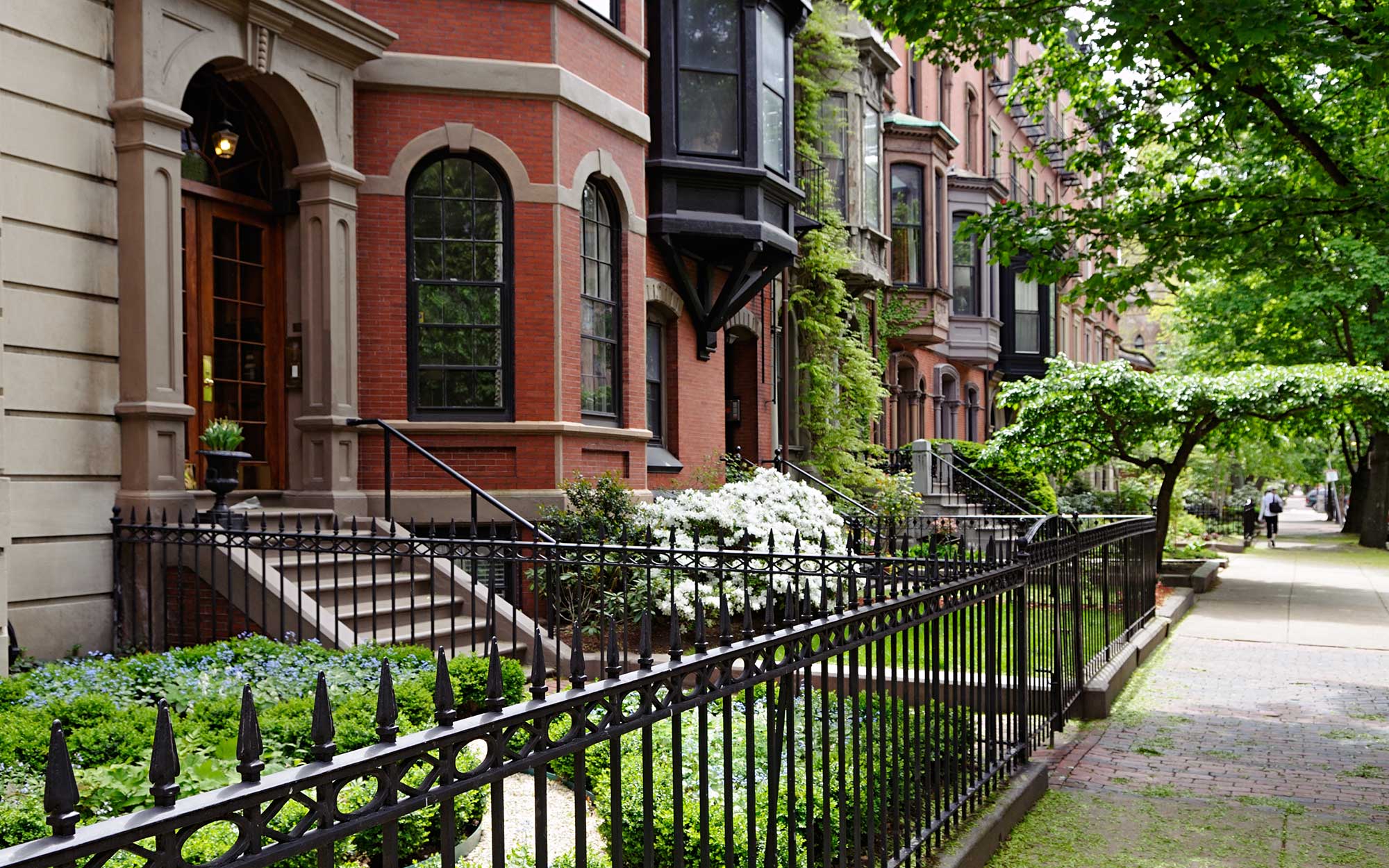
Most visitors to Boston might roam around the Freedom Trail for an afternoon, or take a saunter around the Common and the Public Garden. But if you’d like to go in a different direction, we’ve got some under-the-radar walks to offer. After all, this is America’s most pedestrian-friendly city, and these secret stretches will make you see it like never before.
18. Longwood Avenue
Amidst the bustle of Longwood Avenue’s many medical institutions, you can pay a visit to the Warren Anatomical Museum and spend a few moments people-watching in front of Harvard University’s Medical School campus on their well-appointed grand lawn.
19. Bay State Road
Once the home of Boston’s most proper residents, this expansive road contains a myriad of gorgeous brick buildings, many of which are now part of Boston University’s campus. Make sure and stop by The Castle, which is an elaborate Tudor Revival mansion to take a look at its lavish interior.
20. Shawmut Avenue
A stroll down Shawmut Avenue in the South End is a perfect way to explore the area’s distinguished Victorian architecture. Wander through nearby Blackstone Square to look over its lovely fountain, which is decorated with playful dolphins.
21. William J. Day Boulevard
Originally called the Strandway, William J. Day Boulevard leads curious pedestrians along some of South Boston’s finest beaches. Make your way around to Castle Island to take a tour of Fort Independence, which has stood guard over Boston for over 160 years.
22. Mt. Vernon Street
To walk the length of Mt. Vernon Street on Beacon Hill is to take a step back in time. With period streetlights and cheek-to-jowl stately brick homes, it’s particularly marvelous to wander at twilight. Don’t forget to walk around nearby Louisburg Square, which is surrounded by Greek Revival homes.
23. Hemenway Street
Truly charming Hemenway Street is the connective tissue between the Fens and the Back Bay. As you walk along it, you might hear a bit of coloratura from an open window at the Boston Conservatory or see folks enjoying a peaceful moment in Forsyth Park.
24. Dartmouth Street
The bustle of Dartmouth Street offers up an embarrassment of cultural riches, including views of H.H. Richardson’s Trinity Church, the Boston Public Library’s main branch, and the stunning statuary of the Commonwealth Avenue Mall.
25. Centre Street in Jamaica Plain
Follow the gentle curve of Jamaica Plain’s Centre Street to find bookstores, tiny boutiques, and more. Gather strength or finish off the day with sangria and tapas at Tres Gatos.
26. Park Drive in Back Bay Fens
Take a long walk along Park Drive to experience master landscape designer Frederick Law Olmsted’s eye for details. As part of this excursion, you’ll pass by elaborate rose gardens, the Fenway Victory Gardens, and the Holy Trinity Orthodox Cathedral.
27. Mount Auburn Street in Cambridge
Prim and proper, Mount Auburn Street is one of Cambridge’s greatest thoroughfares. A leisurely journey will take visitors from such stalwart’s as J. Press (look out for Harvard scarves and bow-ties) all the way through Harvard Square to the distinguished pastoral setting of Mount Auburn Cemetery.
—Max Grinnell
Want to know more about the above? Read the full scoop here.
Chicago
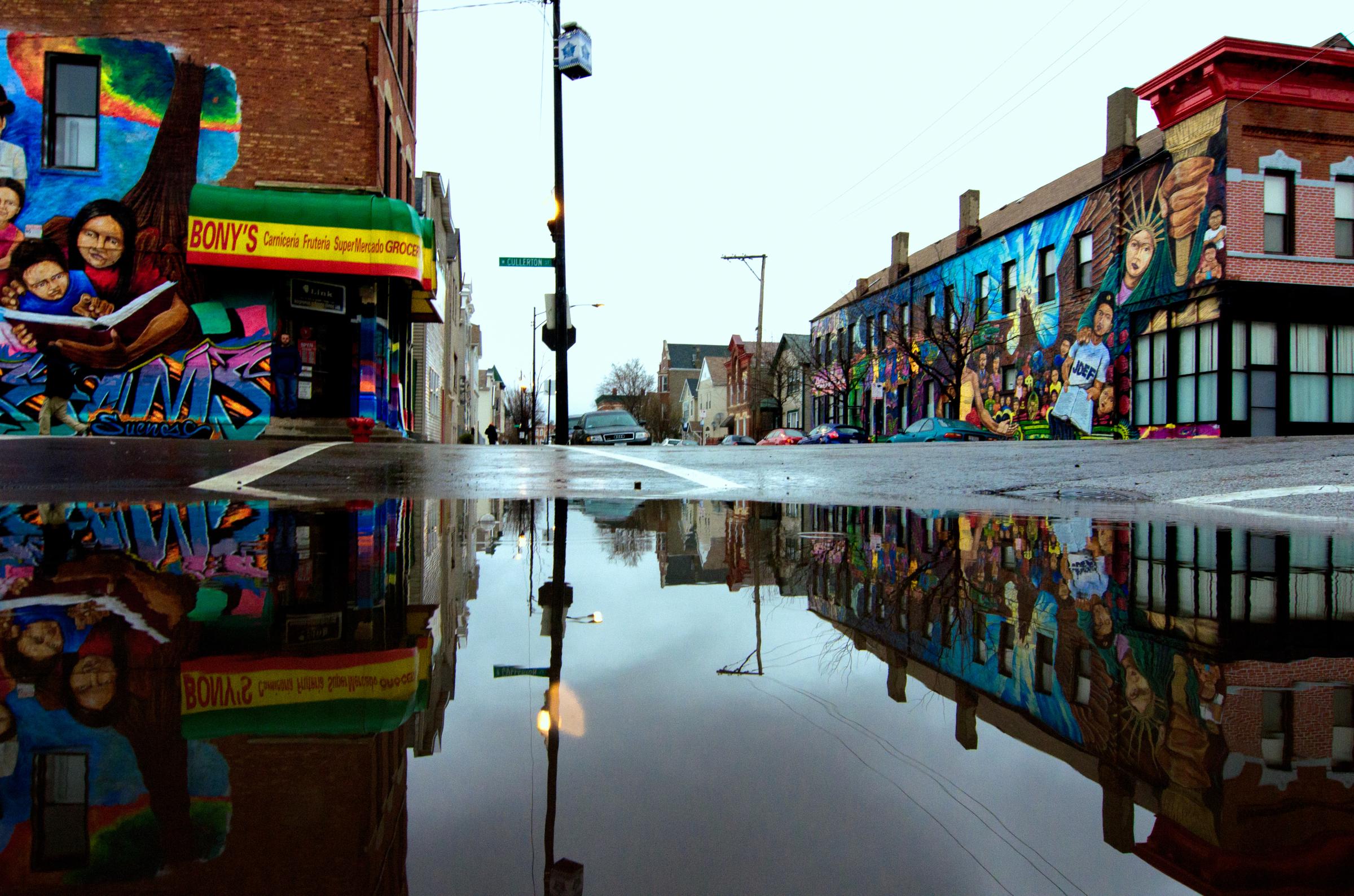
If you’ve been on a walk through Chicago, you’ve probably found time to breeze along State Street or Michigan Avenue. Fine streets both, but why not try going in a different direction?
28. North Alta Vista Terrace
Located just a block or two north of Wrigley Field, this quiet residential block appears to have been lifted out of Mayfair. Designed to mimic a clutch of London row houses, it’s also Chicago’s first historic district.
29. West Burton Place
Just off the bustle of Wells Street in Old Town, this one-block-long enclave features several homes reinvented as a mini-artist’s colony in the 1920s. Peek into the courtyard to see a range of decorative tiles and repurposed architectural fragments.
30. North State Parkway
From Queen Anne mansions to Art Moderne apartment complexes, this stretch of State Parkway on the Gold Coast is an architectural delight. Along the way, you’ll see Hugh Hefner’s former Playboy mansion and the official residence of the Roman Catholic archbishop of Chicago. It’s hard to miss; it’s got 19 chimneys.
31. East 58th Street
Slipping onto 58th Street in the center of Hyde Park will guide you by a raft of gray Collegiate Gothic glories on the University of Chicago campus. Along the way you can stop by the Divinity School Cafe (it’s appropriately called “Grounds of Being”) and look over the galleries containing archaeological wonders at the Oriental Institute.
32. West Wacker Drive
On this stretch of Wacker Drive, you’ll have stunning views of the Art Deco Merchandise Mart to the north while walking in the shadow of modern masterpieces to the south. Be sure to check out the curved glass façade of 333 Wacker Drive and 77 West Wacker Drive, which is topped off with a Roman pediment.
33. South Dearborn
In this canyon of architectural wonders in the Loop, walkers can stop by the Monadnock Building for a latte at Intelligentsia Cafe and marvel at this early skyscraper. This stretch of Dearborn also includes the Marquette Building, which has elaborate relief sculptures depicting the life of Jacques Marquette, noted 17th-century explorer and Jesuit priest.
34. North Damen Ave
To walk the blocks of North Damen Avenue between North Avenue and the Bloomingdale Trail (a.k.a. the 606) is to be tempted by culinary delights at just about every step. You can pick up picnic supplies on your walk at the Goddess and Grocer and stop by Mindy’s Hot Chocolate, for, well, you guessed it. Step on up to the 606 to explore this new and wonderful linear park through the heart of the city.
35. West 18th St
Walking down 18th Street presents the casual stroller with a series of compelling murals depicting the Pilsen community’s history, along with the opportunity to stop by and take in a show at the recently renovated Thalia Hall. Don’t forget to look up at the spire of St. Procopius Catholic Church, which is a fantastic reminder of the area’s Czech past.
36. East Lake Shore Drive Historic District
This stunning long block along Lake Michigan offers up a heavenly troika of gorgeous apartment buildings by the noted architectural firm of Marshall & Fox. Primarily from the roaring 1920s, the structures here provide a riot of detail, including gorgeous Second Empire-style mansard roofs. Stroll on over to the Drake Hotel for their afternoon tea service after you’re done for petit fours and oolong.
37. West Armitage
Hopping off the CTA’s Armitage stop, you can wander along West Armitage to explore the vast range of architectural styles (including Italianate) represented in the commercial structures that line these blocks. As you walk around this late 19th-century landscape, you’d do well to stop by Glazed and Infused, a local luxe donut emporium.
—Max Grinnell
Want to know more about the above? Read the full scoop here.
London

Think you know London? Take a tour of these hidden streets for top-notch British-made menswear, a board game café, and a canal-side pub.
38. Lambs Conduit Street in Bloomsbury
An eclectic mix of intellectual shops line this pedestrian street not far from the British Museum. Shop for British-made menswear at Folk or Oliver Spencer, and for quirky interiors decor and jewelry at Darkroom. Persephone stocks reprints of women writers in now-signature grey bindings, which you can follow up with a coffee kick from Knockbox.
39. Seymour Place in Marylebone/Marble Arch
Nearby Chiltern Street may take a lot of glory, but little Seymour Place has much of the gentile, up-market charm without the sceney braying. What it lacks in shopping it makes up for in culinary appeal. Sophisticated Basque pintxo bar Donostia, which opened in 2012, has became so popular, a sibling spot has just opened across the road. Lurra has a similar Spanish food focus but with a chef’s garden and outdoor dining courtyard. For fashionable types, there’s also the lauded Vinoteca winebar, American dining at The Lockhart (don’t miss the cocktails at the new Showdown Bar downstairs) and a smart Italian café and restaurant, Bernadis. Sandy’s is the place for old-school pizza. Bonus? Hyde Park is a five-minute walk away.
40. Acton Mews, in Hackney
With Redchurch Street and Broadway Market now firmly on the map, visitors looking to tap into Hackney’s hipster vibe should head for Haggerston’s Acton Mews. This cobbled street of brick railway arches that carry the East London Line has had a rapid transformation from no-go to hot spot, housing some interesting openings that includes cultural venue Trip Space, queue-worthy mezze restaurant Berber & Q, and a board game café.
41. Formosa Street in Maida Vale
Not far from the Warwick Avenue that Duffy’s heartbreak made famous is pretty Formosa Street, with its short row of neighborhood restaurants (Amoul’s Lebanese is a family-friendly spot), rated beauty parlor, a great Victorian pub (the Prince Alfred with its connected Formosa Dining Room) and the lovely HandMade Interiors homeware shop. Mooch on down past the street’s grand, colonnaded houses and hit the Waterway pub, which is right on the canal at the end of the road.
42. Marylebone Lane, Marylebone
A lot of people walk right by the entrance to teeny, historic Marylebone Lane, lured by the bright lights of Marylebone High Street. When the Ivy opens an outlet there next month that may change. For now, it’s a charming narrow street that houses unique independent shops with a bohemian air—VV Rouleaux for ribbons and haberdashery, Paul Rothe for jams and condiments served from a Victorian-era shop, and the fabulous KJs Laundry, which stocks directional but wearable fashion brands such as Vanessa Bruno Athé and Second Female alongside pretty jewelry from Alex Monroe and Laura Lee in a welcoming well-curated fashion boutique.
—Emily Mathieson
Want to know more about the above? Read the full scoop here.
Los Angeles
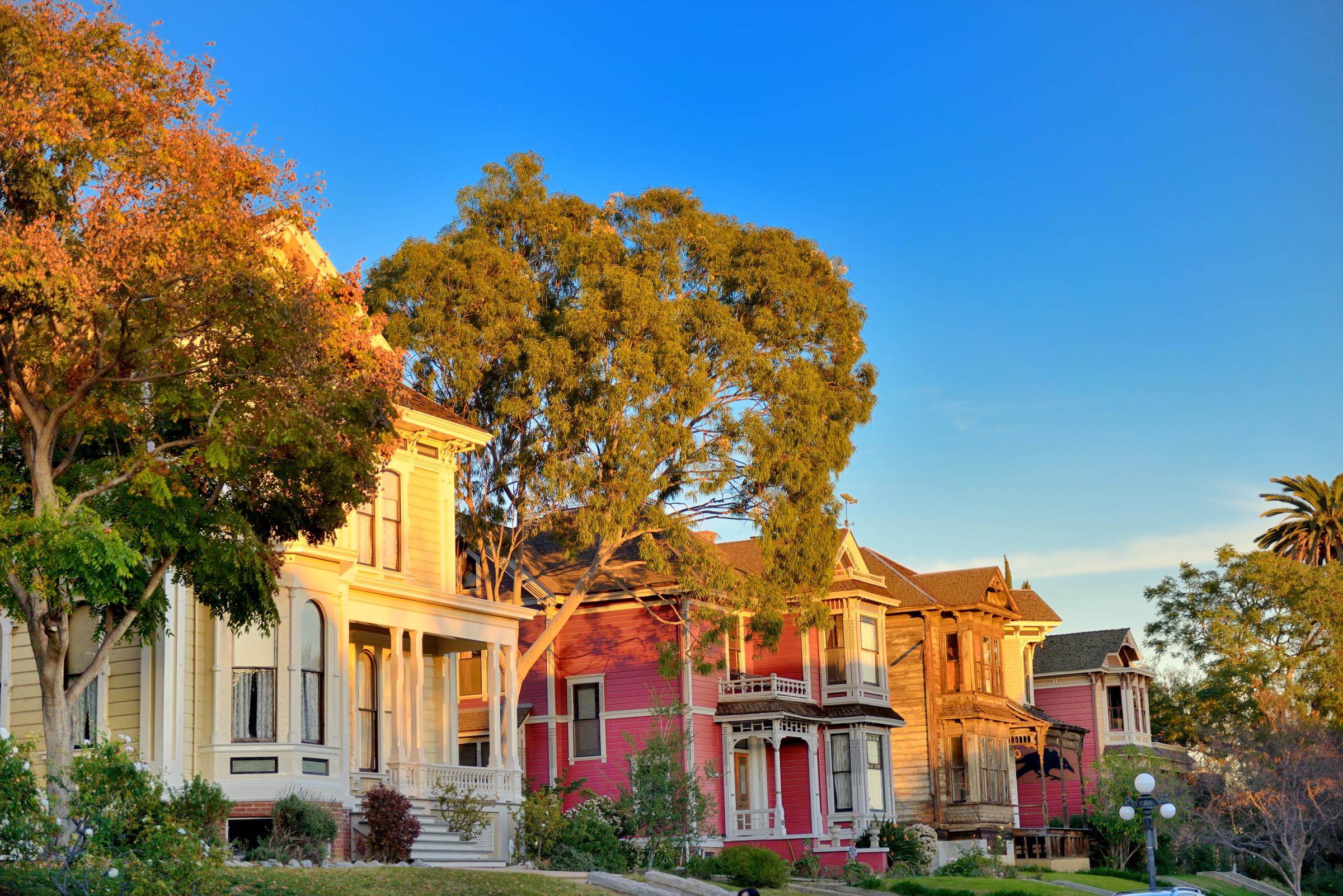
With its maze of freeways and heavily trafficked boulevards, it’s hard to imagine Los Angeles has tucked-away streets that are yet to be discovered. These aren’t back roads or alternate routes to use during rush hour, but avenues that speak to the city’s history, architecture, and diverse patchwork of international neighborhoods. Here are just a few we love.
43. Chung King Road, Chinatown
Chung King Road in Chinatown is a hidden gem of eclectic galleries from up-and-coming Downtown L.A. artists that have put this historic neighborhood back in the spotlight. Though the road itself is quiet during the day, the sleeping dragon awakens on various Saturday nights, when you can take self-guided tours through galleries like Charlie James,Coagula Curatorial, Fifth Floor Gallery, and more. Be sure to stop by some of Chinatown’s new hip restaurants like Pok Pok, RamenChamp, Chego, or Burgerlords while you’re in the area.
44. Mercado Olympic, DTLA
On Saturdays and Sundays, the stretch of Olympic Boulevard just west of Central Avenue sometimes referred to as the Piñata District transforms into what’s been affectionately named Mercado Olympic. The weekend marketplace draws Latino families and lovers of Mexican street food not only to seek out party supplies, but for some of the most authentic eats this side of the border. You’ll find everything from funky huitlacoche and beautifully braided Oaxaca cheese to freshly fried churros dusted with sugar. Added bonus: some shops sell produce and spices for stocking your fridge, so you can bring the flavor of L.A. into your own home.
45. Carroll Avenue, Angelino Heights
Tucked away from the hipster enclaves on the easternmost part of Echo Park lies Angelino Heights, one of the city’s oldest districts, only slightly preceded by Bunker Hill. The neighborhood’s well-preserved Victorian Era, Queen Anne and Eastlake homes have been pictured in countless films throughout the years, with the highest concentration built along Carroll Avenue. The L.A. Conservancy leads walking tours through Angelino Heights, including two private interior home tours.
46. Broadway Theatre District, DTLA
Though Hollywood is often thought of as being the center of the entertainment industry, Downtown L.A.’s Broadway Theatre District was actually the hub of the industry before World War II. Located between 3rd and 9th Streets on South Broadway, it’s actually the largest theater district listed with the National Register of Historic Places, with 12 architecturally significant movie theaters built between 1910 and 1931. Though few still function as places to catch a picture, the L.A. Conservancy offers walking tours through this neighborhood, too.
47. Sawtelle Avenue, Sawtelle Japantown
Formerly known as Little Osaka, Sawtelle Japantown is a historic West L.A. enclave where Japanese immigrants began settling in the early 1900s, initially farming barley and celery in open fields. Many of those living in the area were sent by the U.S. government to Manzanar and other internment camps during World War II, but resettled afterwards, forming the basis for the community that exists today. Now trendy eateries, bars, boba shops, and boutiques line Sawtelle Avenue, making it one of the city’s most underrated streets with a storied past.
48. Sushi Row, The Valley
Many hoity-toity Angelenos wouldn’t dare take a trip to the Valley, let alone for an evening out eating. What their city-centric views are missing out on, though, is Sushi Row along the iconic Ventura Boulevard in the San Fernando Valley. The trend of dining on fresh fish actually started in the SFV in the 1980s, making it the first spot outside Japan to indulge in the delicacy that’s captivated the globe. Spots like Asanebo and Sushi Iki are well worth the trek up the 101.
49. 6th Street, DTLA
Admittedly, 6th Street is hardly a secret when it comes to using the thoroughfare as a shortcut during rush hour, but for out-of-towners, isn’t nearly as recognizable or iconic as Hollywood, Sepulveda, or Wilshire Boulevards. The appeal of this east-to-west street is that it takes a driver from LACMA to Downtown through neighborhoods that embody the diversity of L.A.—from Hancock Park’s oak-lined streets and stately homes to Koreatown’s kinetic karaoke joints and nightlife, and the now white-hot hipster cocktail bars in Downtown’s Historic Core.
50. Wonder View Drive, Hollywood Reservoir
At the bottom of the appropriately named Wonder View Drive you’ll find one of the city’s lesser-trekked walking paths around the Hollywood Reservoir. The manmade lake designed by William Mulholland is surrounded by oak, pine, eucalyptus, agave, and sage, as well as gorgeous Hollywood homes, some native wildlife, and even a local winery. It’s the ideal place to view the Hollywood sign, and certainly less trafficked than the hike from Griffith Park.
—Krista Simmons
Want to know more about the above? Read the full scoop here.
Maui
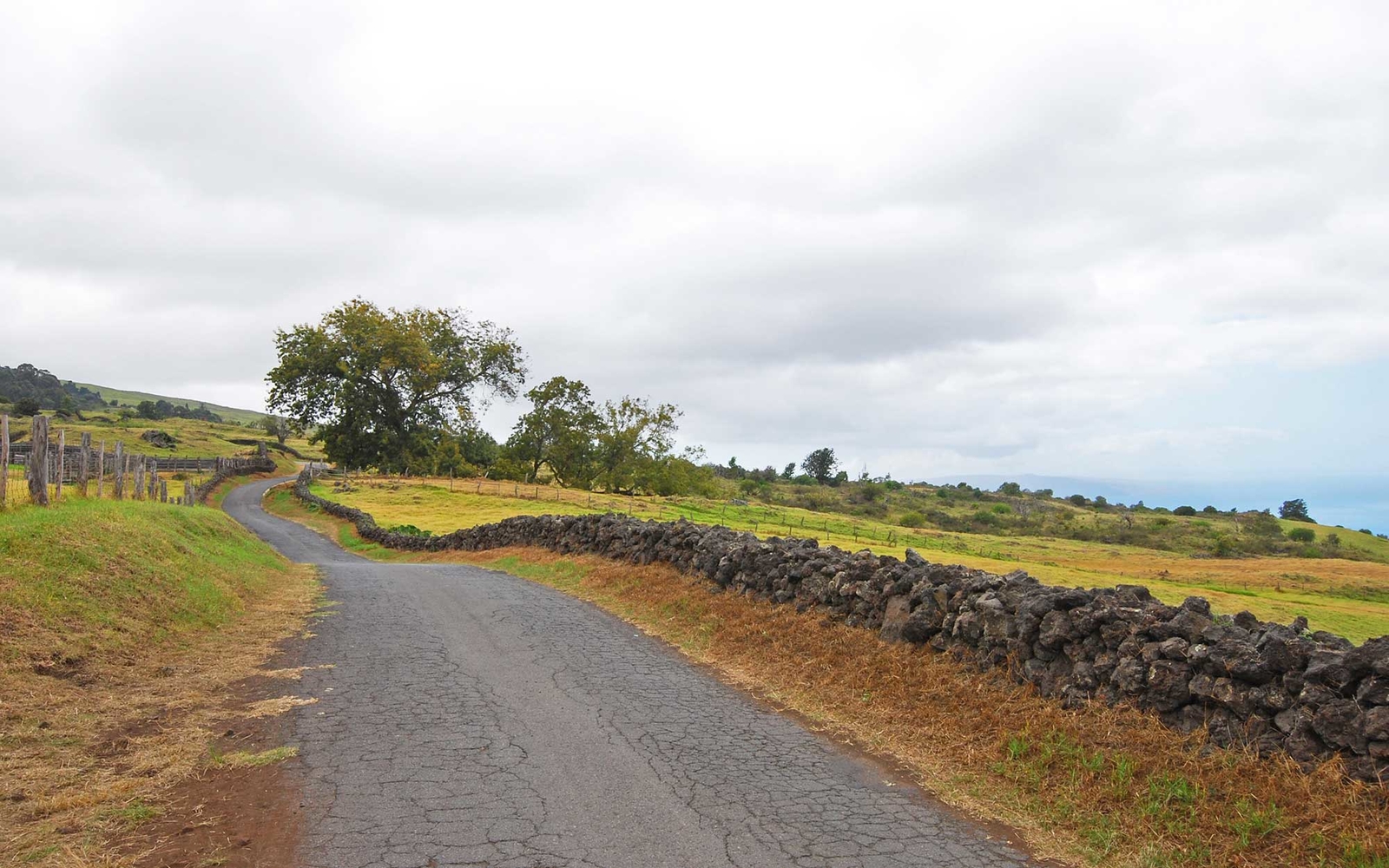
Here’s the thing about traveling on an island: there are only so many places to go. Every road eventually leads to a mountaintop or a beach, and seeing as Maui is smaller than the city of Jacksonville, Florida, you can’t help but wonder—how many secret streets can there be on a rock that’s surrounded by ocean?
A lot, actually. Some streets on Maui—like the Road to Hana—are sights unto themselves, whereas others, like Lahaina’s famous Front Street, are a staple of any visit. Here we’ve highlighted lesser-known stretches that aren’t as crowded as those that make the brochures, yet still offer swoon-worthy scenery, shopping, history, and lots of room to explore.
51. Makena Road
Though much of Maui’s southern shoreline has been systematically developed, Makena is where the southern coast is still a bit raw. Strings of white sand beaches help thin the sun-tanning crowds, and crystalline coves full of turtles and fish invite a morning snorkel. Surfers hike to hidden breaks, there’s an ancient pathway of kings, and Maui’s only officially nude beach is a short walk off of the road.
If staying in Wailea, spend half a day driving to the end of Makena Road. Along the way, you’ll pass little-known beaches like Palauea, or “White Rock,” as you head toward Makena Landing and the historic Keawala‘i Church. Just past Makena State Park (or “Big Beach”) the road becomes single lane; look for the trail to “Secret Beach” that’s actually a hole in the wall. Eventually the road is so close to the coast that waves crash up on the pavement, which eventually crosses the island’s last lava flow from 1793.
52. North Market Street
With the exception of visiting ‘Iao Valley and the Bailey House Museum, not too many visitors to Maui ever find themselves in Wailuku. As the County seat and site of the island’s government offices and buildings, the area has a concrete, almost urban, atmosphere.
That is, until, you get to Market Street—the main vein of an aging town experiencing a funky rebirth. Health food bars and coffee shops have helped the street perk up, and chic boutiques and new-age spas add cosmopolitan flare. On the first Friday of each month, the street becomes a pedestrian mall full of vendors and live entertainment, with the architectural pièce de résistance being ‘Iao Theater—a Spanish Mission style building and oldest theater in Hawaii.
53. Olinda Road
A mile above Makawao’s only intersection, where pastures filled with grazing horses give way to Eucalyptus, Olinda Road is a serpentine climb through Maui’s misty uplands. Drive by Po‘okela Church—one of the oldest churches in Hawaii—before passing the Oskie Rice Roping Arena and site of the Makawao Rodeo. From here, four steep miles of two-lane asphalt lead to the Waihou Spring Trail, where a narrow walking track laden with pine needles leads to a hidden gorge.
54. Stable Road
Unless you’re a windsurfer, local, or fisherman, you’ve probably never heard of this road set two miles west of Pai‘a. A single-lane, sand-strewn road that runs behind Kahului Airport, Stable Road offers access points to a cluster of hidden beaches. Pack an umbrella, a towel, a book, and find your own patch of sand, and sit and watch the planes take off as they roar above the waves. Afternoons can be wind-whipped and gusty, so arrive early for calm conditions on the narrow, thin stretch of beach.
55. Thompson Road
Tucked away in a quiet corner of rural Keokea, Thompson Road is the best spot on Maui for a morning jog or stroll. Flanked by pastures and lava rock walls, the single lane road offers views that stretch from Haleakala’s summit to the glitzy, sandy, Wailea shoreline nearly 3,000 feet below. Begin with a coffee from Grandma’s Coffee House, and continue with a leisurely, mile-long stroll past fleece-wearing locals who smile and wave while out for a walk with the dogs.
—Kyle Ellison
Want to know more about the above? Read the full scoop here.
Rome
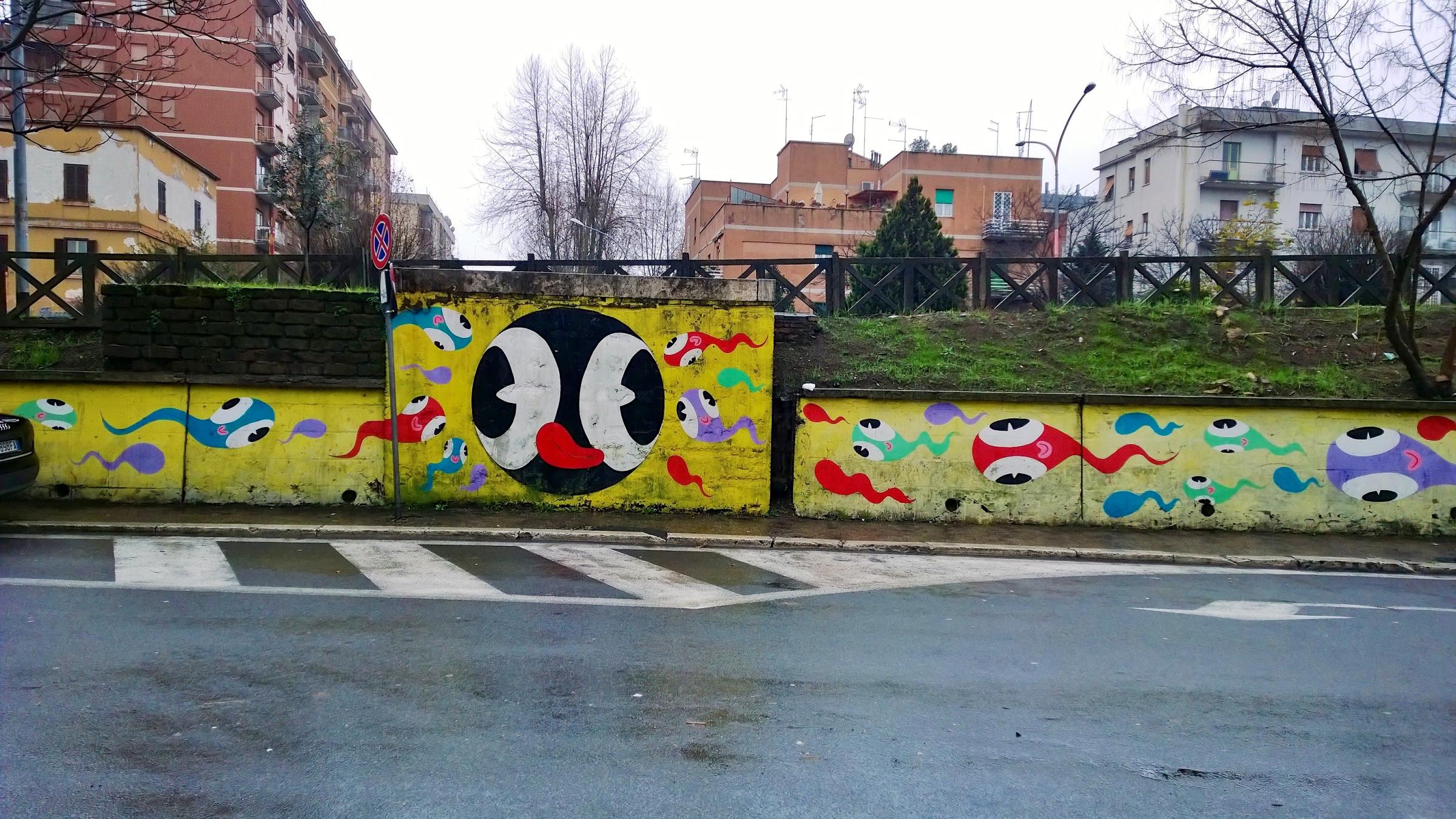
As the third most visited city in the EU (after Paris and London), it can seem there are few areas left to be discovered in Rome, but if you’re willing to look up from the map and stretch your comfort zone, a lesser-known, far more modern version of the city appears. From former Olympic athlete housing to a neighborhood devoted to street art, these are five blocks you won’t want to miss.
56. Piccola Londra
A few tram stops north of Piazza del Popolo, at the corner of Via del Vignola and Via Flaminia, is the street Via Celentano—though its neighbors never call it that. Instead, it’s known as Piccola Londra (Little London), a turn-of-the-century, private road that gives off a Notting Hill-meets-Mary-Poppins vibe. Stop by this stretch to see the colorful, immaculate homes and to marvel at how this haven ever came about.
57. Quartiere Coppedè
In the city’s northeast Trieste neighborhood, there is an early-1900s enclave called the Quartiere Coppedè of whimsical architecture by Florentine architect Gino Coppedè. Marble and metal ornaments like spiders, sea horses, and lizards decorate rustic Craftsman-style houses and buildings, which are painted with modern frescoes and beautiful patterns. It looks like a page from a fairy tale.
58. EUR
The EUR neighborhood, a fifteen-minute drive southwest of the city center, may be well-known but it hardly gets the foot and photo traffic it deserves. Originally designed for the 1942 World Exposition by architect Marcello Piacentini in the late 1930s and finished in the early 1950s, its is a snapshot of a would-have-been Rome, with monumental travertine buildings, palaces, and piazzas of Rationalist architecture. Be on the lookout for the Square Colosseum, a stark white minimalist nod to its 2,000-year-old counterpart.
59. Villaggio Olimpico
Built as prototype athlete housing for the 1960 Olympics in Rome, the Villaggio Olimpico(Olympic Village) is one of Rome’s planned modern neighborhoods, with duplex stilt building, sweeping piazzas, cinemas, pharmacies, and shops—albeit for temporary use. Now fully residential and permanent, its bare modernist architecture fits right in with the surrounding area, a newly developing cultural and architectural mecca that includes PierLuigi Nervi’s Pantheon-like Palazzo dello Sport, Renzo Piano’s 21st century, futuristic Auditorium and Zaha Hadid’s MAXXI museum.
60. Quadraro
Probably one of the best places to get lost, if you can find it. The outer limits Quadraroneighborhood (in Rome’s southeast periphery), is a micro-state all about street art. Artists including Gary Baseman, Alice Pasquini, Jim Avignon and Diavu have covered its exterior walls to create an open-air museum, and more continue to add to it.
—Erica Firpo
Want to know more about the above? Read the full scoop here.
San Francisco
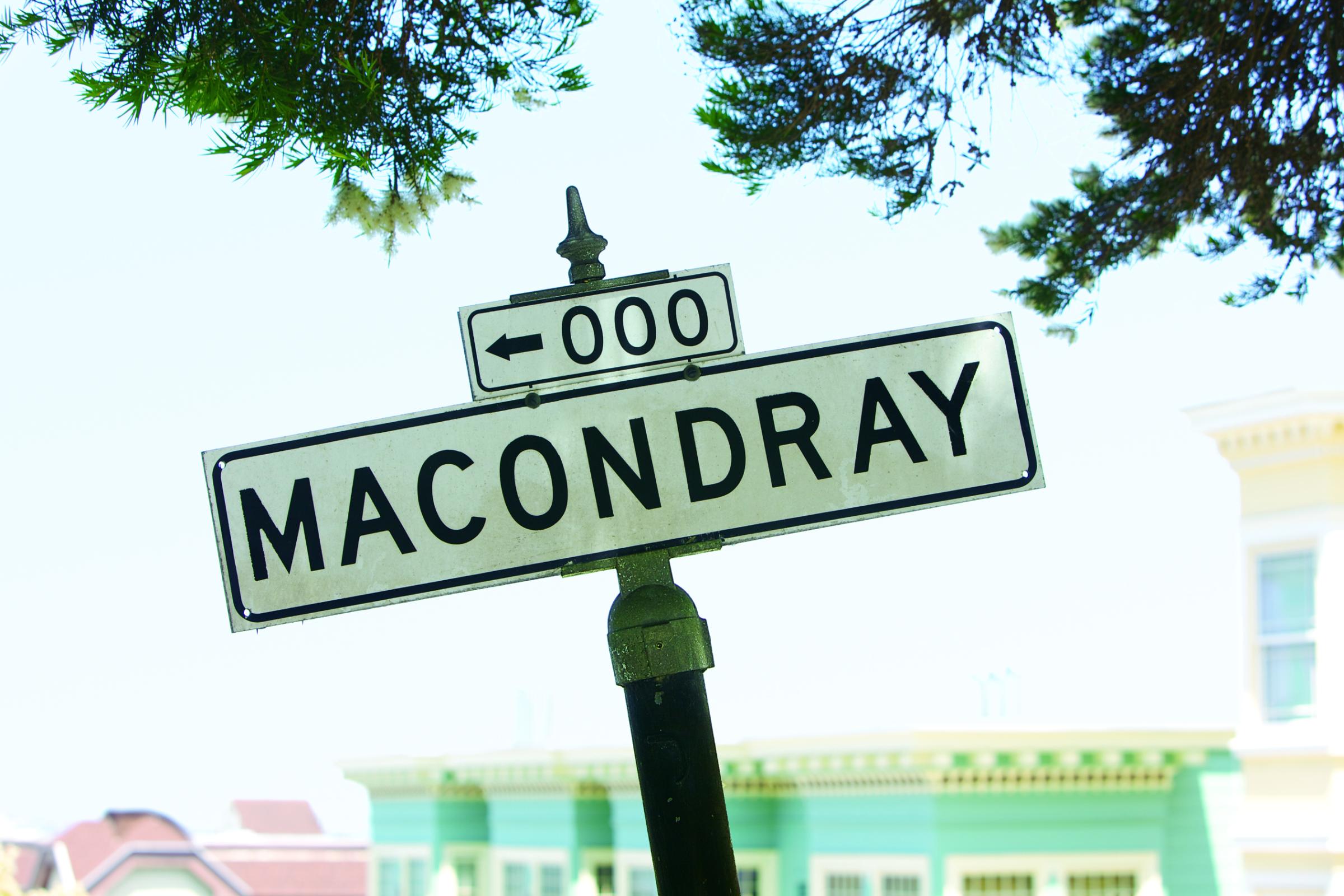
Sure, you can always beeline for Valencia Street, San Francisco’s own restaurant row, browse the upscale boutiques that line Hayes Street, or enter the fray in the up-and-coming nightlife scene pulsating on Polk Street. But if you stick solely to them you could miss out on charming hidden treasures that are fundamental to the city’s offbeat vibe. Here are four hidden stretches that take you off the beaten path in the City by the Bay.
61. Linden Street
This hidden concrete stretch parallel to bustling Hayes Street can justifiably be crowned San Francisco’s trendiest alley. Murals by local street artist Zio Ziegler (who has been called the Banksy of SF) creates a glamorously gritty ambiance from which to consume third-wave coffee and high-end pastries at cult coffee company Blue Bottle’s to-go window. The nearby bench is a good place to chat it up with locals. At the intersection of Linden Street and Octavia there’s also Smitten Ice Cream, Biergarten, and a small urban park with art sculptures.
62. Grant Avenue’s East Side
Veer from the stream of tourists flowing down Columbus Avenue for North Beach’s authentic side, on the western section of Grant Avenue. Unlike the cartoonish tablecloths and souvenir shops that taint the main drag, this narrow and hidden street is strewn with a roof of lights, boutiques, specialty food shops, and galleries run by local artists.
Start on Grant and Vallejo at the old-school coffee shop Caffe Trieste, a spot that legendary Beat Generation poet Lawrence Ferlinghetti still frequents. Cafe Jacqueline serves up sweet and savory soufflés, while hipster haven Public Barber Salon serves free beer. Later, watch the jewelry being made on-site at Mashka.
63. Lyon Street Steps
These wide concrete steps ascend one of San Francisco’s most view-worthy hills like a grand staircase. Set between the Presidio’s eucalyptus grove to the west and ornate mega-mansions to the east, this walk able section of Lyon Street (between Green and Broadway) is framed by manicured hedges and micro-size flower gardens. If you successfully dodge the locals using the stairs and railing as a gym on your way up, you’ll be rewarded with views of the Palace of Fine Arts, the bay, and Sausalito.
64. Macondry Lane
This historic walkway was made famous by Armistead Maupin’s “Tales of the City” and now serves as an ideal place to get a nature fix in the middle of it, at the top of Russian Hill. This discreet lane has arbors dripping in fuchsia bougainvillea, ivy, and palm trees, as well as thoughtfully tended private gardens, Buddhist statues, and peek-a-boo views of Coit Tower.
—Jenna Scatena
Want to know more about the above? Read the full scoop here.
Tokyo
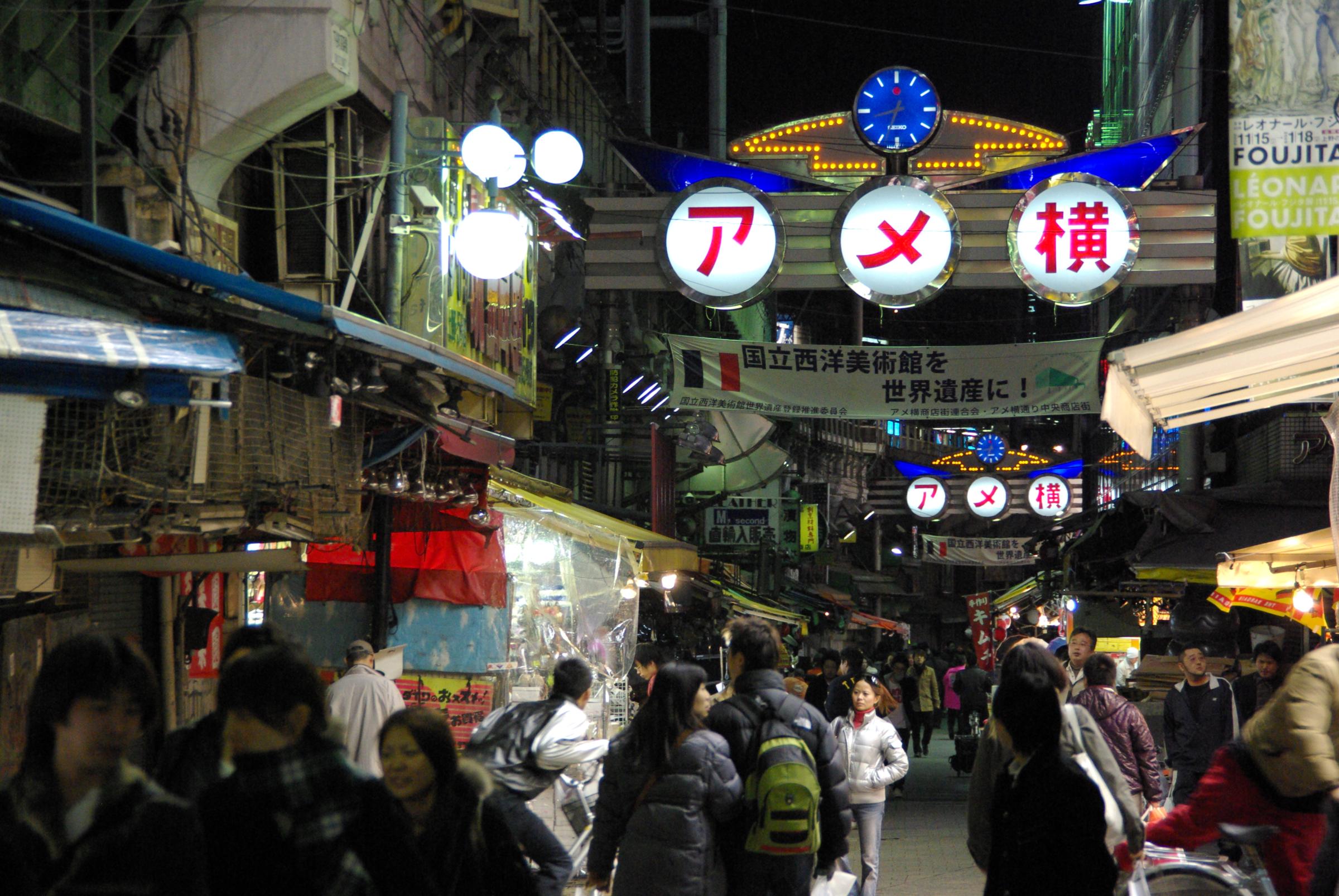
It should come as no surprise that Tokyo has plenty of nooks and crannies ready for discovery. The layout of the metropolis, with its interlacing walkable neighborhoods overlaid with a formidable and extensive transportation system, means that it’s easy to find little alcoves stowed around the city, just waiting for a wrong turn or a fortuitous detour. Often called yokocho, meaning alley or lane, or shotengai, meaning shopping street, these narrow pedestrian walkways are perfect for an exploratory ramble.
65. Drinking
Many people have heard of Golden Gai, the seamy rabbits warren of tiny bars in Shinjuku’s red light district. Another Shinjuku favorite, with perhaps a more welcoming atmosphere, is Omoide Yokocho (Memory Lane), a few narrow streets lined with lively bars and eateries, many with only half a dozen seats.
In the Shibuya area, Nonbei Yokocho (Drunkard’s Alley) runs next to the train tracks and is marked by a string of faded, cheerful lanterns at the entrance to a passageway holding a double handful of watering holes. And the delightfully named Harmonica Alley, in the Kichijoji neighborhood, is a maze-like concentration of shops so small that they resemble the close-grouped holes of a mouth harp, with both old-fashioned shopping during the day and drinking establishments by night.
66. Fashion
You can’t miss Omotesando in Harajuku, the high fashion street boasting the likes of Prada and Gucci; the parallel teenybopper Takeshita Street is also easily spotted when exiting Harajuku Station. If you follow Takeshita to its end and cross the street though, you’ll find Harajuku Street, which is quieter, less gaudy, and home to more interesting shops—including lots of thrift stores and indie designers.
On the opposite side of Omotesando you can also visit Cat Street, another fashionable avenue with excellent strolling potential. Thrift store lovers will also want to visit Look Street in Koenji, a lower-key but still painfully cool neighborhood.
67. Shopping
To get a feel for the daily shopping habits of the locals, checking out a shotengai is essential. There are yokocho and shotengai in nearly every neighborhood, usually noted with some kind of gate or sign. These streets have a little of everything, from cafes and fishmongers to folk crafts and shoe repair. This is where you can buy everyday tea, fruit, and get your umbrellas fixed and keys made. Shops tend to be mom-and-pop, often several generations old.
Some great picks are Yanaka Ginza, which boasts an Edo-era flavor; the lively linked Sun Mall, Nakano Broadway; and Ai Road in Nakano, with a bustling mix of older and younger clientele. And of course, Ameya Yokocho (pictured) in Ueno has a hectic, eclectic market vibe leftover from the postwar period. These may be our initial picks, but know there are many more to be found, just around the next corner.
—Selena Hoy
Want to know more about the above? Read the full scoop here.
This article originally appeared on Travel + Leisure
More from Travel + Leisure:
More Must-Reads from TIME
- Cybersecurity Experts Are Sounding the Alarm on DOGE
- Meet the 2025 Women of the Year
- The Harsh Truth About Disability Inclusion
- Why Do More Young Adults Have Cancer?
- Colman Domingo Leads With Radical Love
- How to Get Better at Doing Things Alone
- Michelle Zauner Stares Down the Darkness
Contact us at letters@time.com